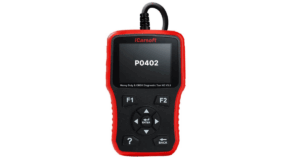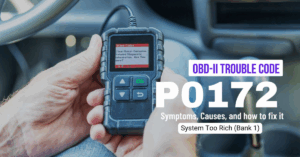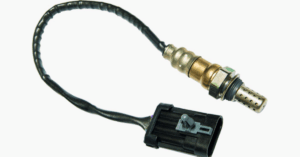Knowing how to reset the ambient temperature sensor in your car is important for keeping it comfy inside. This sensor controls your car’s air conditioning and heating by checking the outside temperature. If your car’s inside temperature starts to feel off, you might need to reset this sensor. This article will show you how to do it step by step, so you can keep your car feeling just right.
Understanding Your Car’s Ambient Temperature Sensor
Are you curious about what an ambient air temperature sensor does in your car? Let’s make it simple.
An ambient air temperature sensor might not be something you think about often, but it’s crucial for your car’s comfort system. It helps keep the inside of your car comfortable by monitoring both the inside and outside temperatures. This sensor ensures that your heating or air conditioning works properly and adjusts if the outside temperature changes.
Knowing how to fix or reset this sensor can be very handy. Let’s dive into an easy-to-follow guide that will help you handle your ambient air temperature sensor like a pro, ensuring your rides are always just the way you like them.
How to Reset Your Car’s Ambient Temperature Sensor
Modern cars come with automatic AC systems and displays that show both the cabin and outside temperatures. The ambient air temperature sensor is a key part of this setup, helping to balance your car’s internal climate based on the temperature outside.
Importance of the Sensor
This sensor ensures that the information about the outside temperature is accurately relayed to the driver’s display. If it malfunctions, you might find your AC not responding correctly to manual settings or the external temperature changes. This makes knowing the ambient air temperature sensor location crucial for troubleshooting.
Steps to Reset or Replace the Ambient Temperature Sensor
-
Locate the Sensor:
First, identify the ambient temperature sensor location. Typically, it’s found at the front of the engine compartment, near the radiator or within the engine bay. This positioning is strategic to avoid heat from the engine affecting its readings.
-
Disconnect the Battery:
Before you start, it’s essential to detach the battery. This is a safety measure to prevent any electrical shocks or damage while working on the car’s electrical components.
-
Remove the Sensor:
Once you’ve secured the area, locate the sensor. It’s usually attached with a plastic clip that connects it to the vehicle’s wiring system. Carefully disconnect the sensor by unclipping it. Be gentle to avoid pulling on the wires or damaging the setup. In some models, the sensor may also be screwed in place.
-
Reset or Replace the Sensor:
After removing the sensor, decide whether to reset or replace it. If the sensor is faulty, replacing it might be the best option. However, if you’re resetting, check for a reset button or mode button on the sensor. Some sensors can be reset by simply cleaning them and reattaching them to check if the readings normalize.
Final Steps
After handling the reset or replacement, reconnect everything and attach the battery. Start your car to ensure everything is working smoothly and the temperature readings on the display are accurate.
READ MORE:
How to Apply CV Axle Grease? A Detailed Guide
What Is The Rod Bearing Replacement Cost? Essential Guide
What Does Full Bolt On Mean in Car’s?
Symptoms of a Faulty Ambient Air Temperature Sensor
When your car’s ambient air temperature sensor starts failing, it can lead to several noticeable issues. Here are the key signs to watch out for:
-
Inconsistent Cabin Temperature
One of the most obvious signs of a bad ambient temperature sensor is fluctuating temperatures inside your car. The sensor helps control your AC system’s automatic adjustments based on external and cabin temperatures. If it sends incorrect information, your AC may not cool the cabin consistently, making the interior environment feel unstable.
-
Decreased Fuel Efficiency
A malfunctioning ambient temperature sensor can lead to poor fuel economy. The sensor’s inaccurate temperature readings can cause your car’s computer to adjust the fuel mixture improperly. If the sensor falsely reports colder outside temperatures, the engine might use more fuel than necessary, thinking it needs to warm up, thus reducing fuel efficiency.
-
Activated Check Engine Light
The check engine light on your dashboard can activate for many reasons, and a faulty ambient temperature sensor is one of them. This light might come on if there’s an issue with the sensor’s circuit, signaling it’s time for a checkup or repair.
-
Engine Overheating
While not always directly linked to the ambient temperature sensor, if this sensor fails, it can disrupt the signals needed for your engine’s cooling fan to operate correctly. Without proper fan operation, your engine could overheat, especially during warm weather or while driving at low speeds.
-
Black Exhaust Smoke
Notice black smoke from your exhaust? This could be a symptom of a faulty ambient air temperature sensor. Incorrect sensor readings can disrupt the air-to-fuel ratio, leading to incomplete combustion and resulting in black smoke emitting from your exhaust.
How to Bypass an Ambient Air Temperature Sensor
Sometimes, you might find yourself needing to bypass the ambient temperature sensor in your car. This could be for diagnostic purposes or to temporarily overcome a sensor malfunction. However, it’s important to approach this with caution. Bypassing components can lead to other issues if not done correctly, so this should only be attempted if you’re familiar with automotive electronics.
Professional Caution
As an experienced mechanic, I must stress that altering your vehicle’s factory settings or wiring can have consequences. This kind of work can lead to premature wear or unexpected problems. Always consider consulting with a professional or reevaluating if the bypass is necessary.
Three Methods to Bypass the Ambient Temperature Sensor
Method 1: Direct Battery Connection
- Locate the Sensor: First, find the ambient temperature sensor, usually located at the front of the engine bay.
- Disconnect the Sensor: Carefully disconnect the sensor’s wires. This might involve cutting the red and black wires, but make sure you have identified the right cables.
- Reconnect Directly: Attach one end of the cut wire directly to the battery terminal. This bypasses the sensor by allowing the vehicle to operate without the sensor’s input.
Method 2: Insulate the Sensor
- Cover the Sensor: An easier and less invasive method is to simply cover the sensor with non-conductive material like paper or tape. This tricks the sensor into reading a constant ambient temperature.
- Reconnect and Test: After insulating the sensor, reconnect any disconnections, and test the vehicle to ensure normal operations.
Method 3: Use of Liquid Crystal
- Apply Liquid Crystal: This advanced method involves applying about 10ml of liquid crystal to a tiny glass capillary positioned near the sensor. The crystal changes phase based on temperature, influencing the sensor’s readings.
- Monitor Changes: This method requires precise application and monitoring to ensure it does not adversely affect other vehicle functions.
Proceed With Caution
Each method comes with its risks and should only be attempted if you are confident in your understanding of your vehicle’s electrical system. Using a scan tool to diagnose the sensor’s functionality before deciding to bypass it is also a wise step.
FAQS
What do I do if my car’s temperature reading seems wrong?
If the temperature display in your car doesn’t seem accurate, it might be due to a problem with the ambient air temperature sensor. You can start by checking if the sensor is dirty or obstructed and cleaning it gently. If this doesn’t help, the sensor might need a reset or replacement.
How often should the ambient temperature sensor be checked?
It’s a good idea to check the ambient temperature sensor at least once a year, especially before the hot or cold seasons start. This check can be part of your regular vehicle maintenance to ensure the sensor is clean and functioning properly.
Can a bad ambient temperature sensor affect my car’s AC?
Yes, if the ambient temperature sensor isn’t working right, it can mess up how your car’s air conditioning adjusts to changes in outside temperature. This might make your car’s cabin too hot or too cold, as the AC won’t be able to regulate the temperature accurately.
What’s the easiest way to fix a faulty ambient temperature sensor?
The easiest fix is often just to reset the sensor, which can clear any glitches in the system. If a reset doesn’t solve the problem, replacing the sensor is the next step. For most cars, this is a straightforward process that can be done at home or by a professional.
Why is my ambient temperature sensor giving incorrect readings after replacement?
If your new sensor is giving wrong readings, it might not be calibrated correctly, or there could be an issue with the installation. Double-check that the sensor is installed correctly and consult your vehicle’s manual or a professional for calibration steps.

Mian Hashir is a passionate automotive enthusiast and the lead author at Car Garagee, a website dedicated to providing in-depth car reviews, maintenance tips, and the latest news in the automotive world. With years of experience in the industry, Hashir combines his technical knowledge with a love for cars to deliver insightful and engaging content. Whether you’re a car owner or a curious reader, Mian Hashir’s articles help readers make informed decisions, from choosing the right vehicle to understanding how to keep it in top condition.











